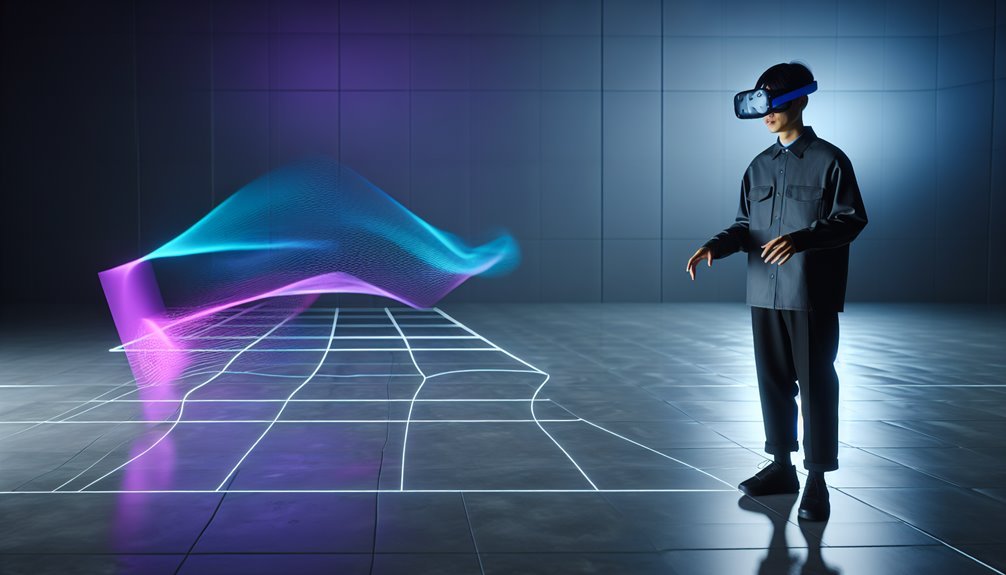You’re stepping into VR, AR, and the Metaverse with practical bets in hand: comfort, clear consent, and scalable tools. You’ll map presence through optics, sound, and touch, then test workflows that dissolve walls between design, training, and collaboration. It’s not just tech hype—it’s an evolving stack you can prototype fast, but the real test is shaping safe, usable spaces that invite others in. So what will you build first?
The Evolution of VR, AR, and the Metaverse
The evolution of VR, AR, and the metaverse tracks a short arc: from novelty to daily tool. You feel the shift as tools become intimate partners, guiding daily decisions and creative sparks. Early prototypes taught you how movement maps into meaning; later systems began to anticipate your needs rather than demand your attention. History of motion tracking isn’t just tech trivia—it’s a patient sculptor of agency, turning your gestures into reliable outcomes. Sensory substitution enters as a radical promise: when sight or hearing falters, layered cues keep you oriented and empowered. You’re not chasing a gadget; you’re shaping a usable, liberating environment. The arc continues, driven by practical experiments, iterative failures, and a shared hunger for autonomy within immersive spaces.
Core Technologies That Drive Immersion
What makes immersion feel real? You lean into a design that fuses perception, motion, and feedback. Core technologies drive that sense of presence through a tight loop: headset optics deliver fielded depth, audio anchors space, and controllers translate intent into action. You optimize frame timing, reduce jitter, and synchronize haptic latency with visual updates, so every touch lands where your brain expects it. Neural coding becomes your guide—your system learns from your movements, predicting intent and adapting stimuli to feel natural rather than programmed. You experiment with spatial audio, prosthetic-like haptics, and precise head-tracking, crafting a believable world that responds as you expect. The result isn’t magic; it’s disciplined engineering that frees you to explore, create, and liberate.
Real-World Applications Across Industries
Across industries, VR, AR, and the Metaverse are moving from novelty to necessity, shaping workflows, training, design, and customer engagement. You’ll notice real-world impact fast: immersive simulations cut downtime, remote collaboration rises, and decision cycles shrink as you model complex systems. In eco tourism, you guide guests through protected habitats with interactive safety explanations, boosting conservation awareness without disturbance. In farming automation, you train operators on robotic harvesters and drones, reducing risk and increasing yield with hands-on precision. The boundary between physical and digital work blurs, freeing you to experiment, iterate, and deploy faster than before.
Across industries, VR, AR, and the Metaverse turn vision into practice, accelerating training, collaboration, and decision-making.
- Accelerated training reduces risk and costs
- Remote collaboration strengthens field operations
- Data-rich experiences boost stakeholder buy-in for sustainable projects
Designing for Presence: UX in VR/AR
Designing for presence in VR and AR means you design for immersion, not just interfaces. You sculpt flow, not just screens, so actions feel earned, not demanded. Start with embodiment: let users sense space, weight, and consequence through calibrated interactions. Prioritize predictable feedback—every gesture should have a coherent path from intention to result. Monitor interaction latency and trim delays; latency breaks trust and presence, so tighten the loop with anticipation, predictive cues, and-smart defaults. Use haptic feedback to translate virtual cause into tactile affirmation, reinforcing agency without overwhelming the senses. Favor modular interfaces that adapt to context, not fixed gadgets, so your users can explore freely. Design for liberation: reduce friction, celebrate autonomy, and invite experimentation without penalty.
Collaboration and Social Interaction in Virtual Spaces
Collaborative spaces in VR and AR hinge on shared presence, so you’ll build tools that let teams act together as if they’re in the same room—even when they’re not.
You’ll design flows that respect collaboration etiquette, balancing voice, gaze, and gesture to prevent overload and misreads.
In practice, you’ll test social presence dynamics by iterating prompts, avatars, and spatial audio that reflect intent and context.
Your approach is practical and experimental: empower spontaneous brainstorming while preserving focus and accountability.
You’ll foreground agency, enabling participants to set norms, switch roles, and co-create artifacts in real time.
- Clarify roles and turn-taking to sustain smooth communication
- Tune spatial cues to clarify intent and reduce ambiguity
- Establish quick, respectful feedback loops for continuous alignment
Accessibility and Ethical Considerations
How accessible is your VR/AR experience to people with different abilities, and what ethical lines guide its design? You design with intention, not afterthought, testing early and often. Accessibility design challenges emerge from mismatch between interface, motion, and cognitive load; you learn to reduce barriers with adjustable UX, captions, audio cues, and alternative navigation. You interrogate data use, ensuring consent, transparency, and user control—ethical data governance that respects autonomy and privacy. You prototype inclusive paths, invite diverse testers, and iterate rapidly to expose bias and exclusion. You resist sensational immersion that erases experience differences. You balance curiosity with responsibility, ensuring environments respect safety, accessibility, and dignity. Liberation comes through thoughtful constraints, open governance, and practical, principled design choices.
Performance, Hardware, and Software Trends
Performance, hardware, and software trends are shaping what you can build and how fast you can iterate. You’ll push lighter headsets, more efficient rendering, and modular platforms that you can customize in minutes, not months. Immersive audio and precise haptics feedback become core design tools, not afterthoughts, letting you craft believable presence without overwhelming power budgets. Software stacks favor data-driven pipelines, edge rendering, and open standards, so you can swap components as needs shift. Your workflow embraces rapid prototyping, performance profiling, and iterative test loops that expose what actually matters to users.
- Prioritize immersive audio placement and latency-aware haptics to convey space and action
- Lean into modular hardware for rapid swapping and experimentation
- Favor scalable, open software ecosystems that accelerate iteration
Challenges, Risks, and Adoption Barriers
Adoption hinges on solving real-world frictions: cost, interoperability, and user acceptance. You’ll confront the friction points head-on, testing what actually moves people beyond curiosity. Costs aren’t just hardware prices; they include training time, integration effort, and ongoing maintenance. A pragmatic cost benefit analysis helps you decide whether gains in productivity, safety, and collaboration outweigh the upfront and lifecycle expenditures.
Interoperability remains messy—standards shift, ecosystems fragment, and vertical silos persist. You’ll adopt modular tools with clear APIs and interoperable data formats to reduce lock-in, speed testing, and refine workflows.
Regulatory compliance can feel like a constraint, but it’s a shield if you design with privacy, safety, and accessibility from day one. Embrace iterative pilots, measure outcomes, and keep momentum toward liberation from outdated constraints.
The Future Landscape of Immersive Technology
What does the near future hold for immersive tech, and how will you ride that wave? You’ll steer toward tools that feel inevitable: personalized interfaces, richer presence, and safer autonomy. The future landscape blends utility with liberation, letting you reclaim time and agency through seamless care, work, and play. Facial expressions, haptic devices, spatial audio, and eye tracking become everyday levers, translating intent into action without friction. You’ll prototype, test, and iterate in open ecosystems that reward curiosity, not conformity. Practical experiments will prove concepts faster, while ethical guardrails protect autonomy and health. The result is a more humane layer between you and reality, where immersive tech amplifies choice without coercion.
- Embrace interoperable, user-centric design that respects consent and privacy
- Build for tactile, believable presence with responsive haptics and precise eye tracking
- Prioritize inclusive access and adaptable experiences across contexts
Conclusion
You’ve seen how VR, AR, and the metaverse move from novelty to necessity, reshaping training, design, and collaboration. You’ll adopt modular tools, cross-device flows, and ethical guardrails to stay agile. Embrace presence, consent, and accessibility as defaults, not afterthoughts. Practical experimentation and rapid prototyping fuel faster outcomes. For all the wow, remember: a headset is a gateway, not a cage. Now, time-travel by anachronism: the abacus meets quantum compute as you iterate.





Leave a Reply